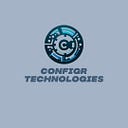Event-Driven Architecture
A Blueprint for Responsive and Scalable Systems
Event-driven architecture (EDA) offers an elegant solution to the challenges of building responsive and scalable systems.
It’s a paradigm that enables systems to react in real-time to changes in state, leading to greater agility and efficiency.
This article will explore EDA concepts, components, use cases, advantages, disadvantages, and implementation best practices.
What is Event-Driven Architecture?
Event-driven architecture is a software design pattern centered around the production, detection, and consumption of events.
An event, in this context, represents a significant change in state within a system. Here’s a breakdown of the core concepts:
- Event Producer: A component (e.g., sensor, software application, microservice) that generates an event when a state change occurs, such as an order being placed on an e-commerce site or a temperature threshold being exceeded in an IoT environment.
- Event: A message representing a state change. It typically contains data about the occurrence (e.g., order details, temperature reading) and metadata like timestamps.
- Event Channels: Mechanisms to enable communication between producers and consumers. These can be message brokers (Kafka, RabbitMQ), event streams, or pub/sub systems.
- Event Consumers: Components that subscribe to event channels, listening for events of interest. Upon receiving an event, they perform actions such as processing (e.g., payment processing), triggering subsequent events, or updating data stores.
The decoupled nature of EDA is key: producers generate events without knowing who’ll consume them, and consumers act independently.
This decoupling increases flexibility and makes adding new components (producers or consumers) easier without impacting the rest of the system.
Key Components of Event-Driven Architecture
- Events: The heart of EDA, carrying relevant information about what, when, and where something occurred.
- Event Sources: Producers that generate events (software, systems, sensors, etc.).
- Event Channels/Routers: Communication pipelines for events, responsible for routing and delivering events to consumers.
- Event Processing: Actions that consumers take in response to events (business logic, triggering other events, data updates, UI changes, and more).
When to Use Event-Driven Architecture
EDA’s strengths shine in scenarios where:
- Real-time or near-real-time responsiveness: Applications must respond quickly to events (e.g., stock trading, fraud detection, online gaming).
- Decoupled Systems: Applications with components that need to communicate without tight integration or dependencies, promoting loose coupling.
- Scalability: Systems must handle varying workloads and fluctuating volumes of events.
- Complex state changes: Applications where cascading events and reactions are common.
- High-throughput environments: Processing massive streams of data from multiple sources.
Use Cases of Event-Driven Architecture
- E-commerce: Order processing, inventory management, recommendation systems, fraud detection
- Financial Services: Real-time trading, risk analysis, regulatory compliance
- IoT and Sensor Networks: Machine monitoring, smart devices, anomaly detection
- Social Platforms: Real-time user activity feeds, notifications
- Microservices Architectures: Service communication and orchestration
Advantages of Event-Driven Architecture
- Responsiveness: Instantaneous event reactions enable real-time applications.
- Scalability: EDA easily manages changing volumes of events by horizontally scaling event processors.
- Loose Coupling: Components are isolated, making development and modification simpler.
- Resiliency: Systems gracefully handle component failures, as consumers can continue processing events.
- Agility: Easily add new functionalities by introducing new event consumers.
- Observability: Provides insights into system behavior through event data logging.
Disadvantages of Event-Driven Architecture
- Increased Complexity: EDA can introduce design and management complexity compared to traditional architectures.
- Debugging: Decentralized communication can make tracking event flow in large systems harder.
- Guaranteed Delivery and Ordering: Implementing these may require additional overhead.
- Learning Curve: Adopting EDA necessitates understanding asynchronous patterns.
Best Practices for Implementing Event-Driven Architecture
- Define a Clear Event Schema: Events should have a well-defined structure, ensuring data consistency for consumers.
- Choose the Right Event Broker: Select a message broker or streaming platform that meets your scalability, reliability, and feature requirements (e.g., Kafka, RabbitMQ, Amazon Kinesis, etc.).
- Prioritize Event Immutability: Once produced, events should not be modified, promoting reliability and aiding with debugging.
- Decouple Event Logic from Business Logic: Keep event-handling streamlined, with consumers focusing on business logic in response to the event.
- Manage Event Ordering: Use ordering mechanisms or timestamps if the sequence of events is critical to your application.
- Consider a Central Event Catalog: Maintain a repository of event types to improve discoverability and understanding.
- Thoroughly Test and Monitor: Implement robust testing across the event flow and set up monitoring systems to track system health.
Additional Considerations
- Event Sourcing: A pattern combining EDA with the practice of storing all state changes as an event sequence for auditability and historical analysis.
- Complex Event Processing (CEP): Engines that analyze streams of events in real-time to detect patterns and correlations.
- Choreography vs. Orchestration: Choreography, where components react directly to events, versus orchestration, where there’s a central orchestrator that manages event flow.
Event-driven architecture offers a compelling framework for building responsive, adaptable, and scalable systems essential in today’s fast-paced digital world.
By understanding the core elements, use cases, trade-offs, and best practices, organizations can effectively leverage EDA to gain a competitive advantage.
Its ability to empower applications to react seamlessly to real-time changes will continue to drive innovation across various sectors.
Follow me on Medium, SubStack, LinkedIn, and Facebook.
Clap my articles if you find them useful, drop comments below, and provide your email to receive updates whenever I post something new.
Want to help support my future writing endeavors?
You can do any of the above things and/or “Buy me a cup of coffee.”
It would be greatly appreciated!
Last and most important, have a great day!
Regards,
